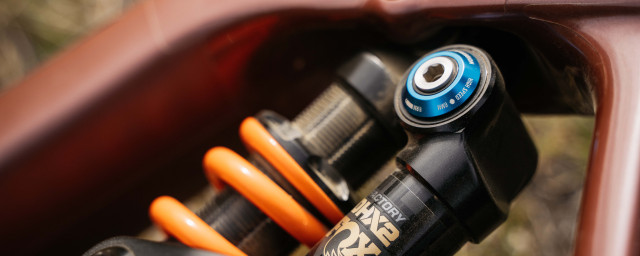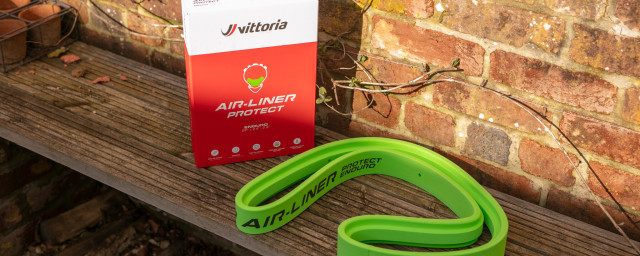It takes a lot to break into the best cycling computer market. Most consumers just aren't all that interested in chasing new brands once they've figured out how to make something work. Even big names have come and gone and each failure makes it even harder for the next new offering. Despite all these barriers, somehow Hammerhead seems to have rounded the corner. The brand has established entry to this small club and continues to move forward.
- Gear of the Year - our favourite tech from 2022
- The best mountain bike apps for iPhone and Android
- Maps over apps, analogue route planning
The Karoo 2, as expected, represents the second entry from Hammerhead and it's the best kind of upgrade. The hardware is smaller and faster but the core of what made the computer recognisable is still there. The original Karoo started making waves in the industry and the update has only continued to do so. Now owned by SRAM, the Karoo 2 is starting to really make people take notice. If you've wondered if maybe you should also take notice, keep reading to see what makes the Hammerhead Karoo 2 unique.
Hammerhead Karoo 2 - Technical details
The Hammerhead Karoo 2 operates in a world that's a lot more like a smartphone than a bike computer. Finding the details of the processor used for a Garmin product, for example, requires an email and even then, it can be a challenge. The Karoo 2 though, proudly lists a quad-core 1.1Ghz, CPU with 2GB of RAM in a dedicated section on the product page. The reason for this is pretty simple. It's a lot closer to a phone than a bike computer.
> Buy now: Hammerhead Karoo 2 cycling computer from Sigma Sports for £359.00
The most visible place that this shows up is the screen. Actually, the screen is the most visible detail on the Hammerhead Karoo 2 because it is truly in a class of its own when it comes to bike computers. If you've ever wondered why even bother with a bike computer given how good a smartphone is, Hammerhead has negated the question. The brand has added a smartphone screen to a bike computer and just sized it down to 3.2-inches (roughly 81mm). Backing up the quality is a 480x800 panel that puts pixel density at 292 PPI with support for 16.7 million colours.
Protecting the brilliantly bright screen is a sheet of Dragontrail glass and a Glass-filled polycarbonate chassis. The glass has a matte coating reminiscent of older Apple computer screens and, like those screens, the glass pushes out to the edge encompassing sizeable bezels. Overall, the dimensions of 100.6mm x 60.8mm x 19.3mm put the Karoo 2 solidly into the mid-size bike computer category with partners such as the Wahoo Element Roam.
Battery life though is a bit less than the rest of the category. Although it's grown since the initial release, Hammerhead still lists a max 12-hour runtime with normal use. That's despite a 2500mAh battery that is actually larger than the competition. The USB-C charging with fast charge capability does help mitigate this though. Fast charging gets Karoo 2 from 0% - 30% in 30 minutes, and fully charged in under 3 hours although you'll need to get creative in the rain. The USB-C port is waterproof on its own, despite gaining a cover over the years, but it will short if there's power flowing through it in the rain.
Rounding out the hardware features are the sensors and connectivity. GPS comes courtesy of a single band GNSS antenna and it sits alongside BT 4.0, Wifi (b/g/n) and ANT+ that connect to compatible sensors. Onboard sensors include a barometer, ambient temperature sensors, a 3-axis accelerometer, a magnetometer and a gyroscope. Somewhat unusually, and once again nodding to the smartphone similarities, there is also a cellular antenna.
Hammerhead Karoo 2 - Performance
Every single discussion of the Hammerhead Karoo 2 I've ever had starts with the screen. Often people don't even remember anything about the computer, just that they saw a friend's bike computer with a screen unlike anything else. It was bright and they want to know more details.
If it feels like I'm belabouring the point, I am. It really is a screen unlike anything else. If you've ever covered the light sensor on your smartphone and had the screen adjust as if it's in a dark room, that's the difference between the Karoo 2 and everything else. You might think your Garmin or Wahoo is plenty bright, and it is, but when you see it next to the Karoo 2 it's a revelation. It's not just the brightness either. The graphics are smoother, the fonts more readable, and the colours are brighter.
There is more to the Karoo 2 than the screen though. The other important thing to understand about using this unit is just how much it changes. Underpinning the system is a version of Android with a custom interface. Hammerhead updates it relentlessly and the updates are so drastic that if you go for a while without using it, the whole system will start to feel completely new. There have even been hardware changes such as a replacement for the lower portion of the shell with an integrated port cover.
Hammerhead has also managed to squeeze a couple of hours of extra battery life out of the unit since launch - and there is a battery-saving mode so you can save the battery on longer rides. On those rides you might also want to share your location and that is possible if you slot a SIM-card into the device.
What hasn't seen an update is the non-existent, companion app. Only the most basic functions are available off the unit and happen via a web interface. You can see your rides as well as a map and summary but there's no attempt to keep track of anything. If you want an analysis of a ride, or to keep track of anything over time, you'll want to add an account like Strava to sync to - and similarly for any routes you need to use you need to connect your Strava, Komoot or Ride With GPS account to the Hammerhead dashboard.
You can also add a TrainingPeaks account to sync workouts and you can create routes in the capable map creator, but mostly the web interface is a conduit. Adding a route requires uploading a file or providing a URL and other workouts will need a file to upload.
That leaves most of your interaction with the Hammerhead Karoo 2 to the device itself. It's here that the Android operating system really shines. Like an Android phone, a swipe from the top of the screen gets you to settings but unlike a phone, there's always a non-touchscreen way to get to everything. Instead of the swipe from the top, press the lower left button while on the home screen and you will dive into the menu. The top two buttons move the selection around the screen, and a press on the bottom right button will select settings once you've highlighted that option on the menu. You can also switch on a specific Rain Lock function to disable the touch screen in wet conditions and here's even an Android keyboard that will appear from time to time and works with a finger or buttons.
When it comes to day-to-day use, things are more typical of other bike computers. There is a custom out front mount included but there's also an adapter that lets the Karoo 2 work with Garmin-compatible mounts.
Navigation is excellent partly because the map is so clear and supports the same multi-touch interaction as a phone, allowing you to pinch the screen for zooming in and swiping between screens. The Karoo 2 really stands out in re-routing compared to, for example, Garmin, and instead of simply directing you back to the route and telling you to do multiple u-turns, the Karoo 2 actually plans you a new route to join the original.
There is also an automatic climbing screen that's very similar to Garmin but works even when there's no route loaded. Every screen is customisable in a way that's once again reminiscent of a Garmin head unit as well as offering the ability to save multiple setups via different profiles. In short, there are no real surprises in this part of the experience.
Hammerhead Karoo 2 - Verdict
I reviewed the Hammerhead Karoo 2 in late 2020 when it initially hit the market. At the time I had to really stretch to figure out how to make it work compared to Garmin and Wahoo. It took me a while to figure out the interface, the USB-C port had no cover, and the battery life was around 10 hours in normal use. Everything that made it great was there but I didn't really get why people loved it so much. Then I put it in a drawer for a while.
The next time I took it out, essentially everything I'd disliked about the interface had changed. The relentless nature of the updates had smoothed it out like water on a rock. The bright screen was still there but now I could focus on the brilliance of the dual touchscreen and button-based interface. Eventually, even the uncovered USB-C port got an update that required a couple of minutes with a screwdriver - and you can customise your unit by getting different frames for it. That kind of change is unheard of for a bike computer but it's normal for Hammerhead.
It also doesn't even touch on the other superpower of having Android on board. There's a custom UI on top but it's still Android and that means you can sideload apps. Zwift companion app and streaming music services are attainable with only a bit of work and you can get as creative as you want. Perhaps you'd like to add Shimano Di2 shifting info back to your SRAM bike computer? Yup, just a sideload away. That's a powerful feature.
Despite all the good, there are two areas where the Hammerhead Karoo 2 still needs a bit of work. Likely out of reach for this generation is the battery life. 12 hours in normal use is pretty good but it lags behind Wahoo and it's not even within spitting distance of Garmin. Not everyone will consider that an issue but it's worth considering.
The other issue is the lack of a companion app. You can add a bookmark to your mobile browser but it's all a hassle. Hammerhead is right to let other software handle after-ride analysis but they need to make it easy to interface with those same services. Routes getting sucked across automatically is the norm and the Karoo 2 lacks that functionality. It also lacks proper smartphone integrations like responding to a text or sending a tracking link to a friend or loved one without needing a sim card.
Price-wise, the Karoo 2 retails for £359, making it an attractive option among the main competitors. Garmin's flagship model, the Edge 1040 Solar, costs £629.99, whereas Wahoo's Roam v2 is a lot closer at £350.
What's clear is that Hammerhead is a force in the bike computer market. The brand has arrived at the top tier and now they even have the deep pocket backing of SRAM. The only question with the Karoo 2 is what features are important to you? Should you trade smartphone integrations and battery life for a gorgeous screen and sideloading of apps?
















Add comment